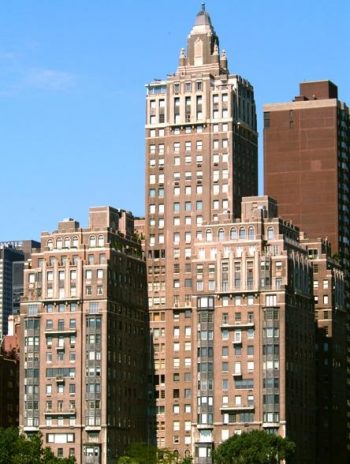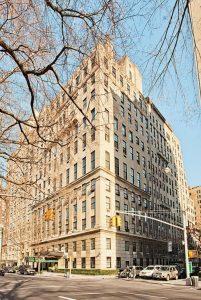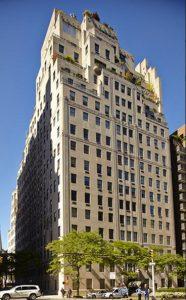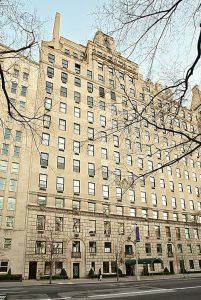Upper East Side co-ops have long been part of a prestigious and exclusive club — with their prime location and often stringent board approvals. But in a landscape of brand-new projects and high-end amenities, co-op listings on the UES are languishing on a gilded shelf.

435 East 52nd Street
A glut of product across Manhattan and even Brooklyn has led some demand to shift away from UES co-op listings — especially as more people are opting for the latest amenities, avoiding board approval or attaining more flexible financing.
“We’re seeing much more inventory than there are serious buyers out there,” said Joshua Wesoky, an agent at Compass. “There’s a natural turnover with the age of these buildings and a generation of people moving on.”
Inventory has been on an upward trajectory in Manhattan. In the fourth quarter, sales listings swelled 12 percent, according to Douglas Elliman — with co-op listings climbing 24 percent. But on the UES in particular, co-ops currently on the market far outnumber condos. On average, there are about two co-op units for every one condo, according to data compiled by real estate analytics platform Compit.
“There are these grand apartments on Park Avenue that previously would have been commanding high prices,” said Louisa Gillen of The Simple Real Estate Co. “Now, even at a nice discount, they’re still sitting.”
In part, that’s because buyers have much more inventory to choose from — which has has allowed them to be pickier, she said. Increasingly, they are unwilling to budge on what they want. But, as the market has evolved, what they want has also changed.
Losing luster

960 Fifth Avenue
“The Upper East Side doesn’t have the resonance that it once had,” said Frederick Warburg Peters, CEO of Warburg Realty. “They’re competing against a lot more in every way.”
The competition comes from other neighborhoods, condo projects and an environment of declining prices. Manhattan co-ops spent 15 percent more time on the market than a year earlier. And on the UES, there’s a smaller constituency interested in those units, Peters said.
Amid the shift, condos in the neighborhood have been selling at higher prices. The median UES condo price is $2.25 million, compared with $1.4 million for a co-op, according to monthly data compiled in December by StreetEasy. Because prices for condos have appreciated more, buyers in the neighborhood may be able to find attractive deals on co-ops, brokers said. In 2018, the average price of a two-bedroom UES condo was 31 percent higher than that its co-op counterpart, according to Compit. Among larger units, four-bedroom condos were 52 percent pricier on average.
Despite the prospect of snagging a good deal, the co-op process is too cumbersome for some buyers.
“One thing condos have done, is that they’ve made many buyers a lot more skeptical about whether they need to go through the agita of the co-op process,” Peters said. “For many years, there wasn’t really an alternative, so you still had to deal with that. Now there are choices, so maybe you don’t have to deal with it.”
UES co-ops, on average, are priced 4 percent higher than the average price of new developments across the city, according to CORE’s data. When they do sell, it’s at a notable discount. On a price-per-square-foot basis, there’s a 30 percent gap between the price of active UES co-op listings and those in contract, according to CORE.
Simple’s Gillen pointed to several of her own deals in the neighborhood that have closed at significant discounts. One co-op at 655 Park Avenue sold in November at 22 percent below its last asking price of $4.2 million. Seeing these sales will affect the offers buyers make going forward, she said.

740 Park Avenue
Phyllis Crosby, an agent at CORE, said she’s worked with several buyers who’ve initially shown interest in the neighborhood only to gravitate elsewhere — or stop searching entirely. One first-time buyer started off looking on the UES but instead opted for Brooklyn, finding the pricing and neighborhoods more appealing, she said. Another couple shopping on the UES found that they couldn’t get what they wanted in their price range and decided to wait in the hopes that prices would slide further.
Pay up
A unique financial constraint for many of these co-ops is down payment requirements by boards, brokers said. Most boards will require a 50 percent down payment or higher — and a number of buildings don’t allow financing at all, said Compass’ Wesoky. But as real estate prices have accelerated faster than wages, and the structure of compensation packages has evolved, there’s a smaller pool of buyers who are able to put that much cash down.
Boards should become more nuanced in the way they look at prospective buyers’ financials, Wesoky said. Those who are well-compensated in combination of cash and stock — or have a varied pool of assets — may be good candidates even if they don’t have enough liquid net worth for a 50 percent down payment, he said.
“In order to sustain prices, they’re going to have to reduce expectations of the amount of money someone can put down,” he said. “If they were to do that, there would be a much larger pool of financially qualified buyers.”
For their part, many boards pride themselves on remaining financially conservative, agents said. And they often cite the financial constraints as the reason they were able to avoid foreclosures during the housing crisis. But those who can’t meet those requirements will often turn to condos at the same price point instead.
“Boards tend to get more stringent often when the market gets worse because they feel like they have to make doubly sure they’re protected,” Peters said. “In a way, that’s good — but it can also backfire if it means that you don’t actually accept the people who are the right people for the property.”
The pre-war edge
Even within the neighborhood, however, certain types of buildings stand to fare much better than others. New development condos don’t have the same feel and grandeur as the pre-war buildings on the UES, said Brown Harris Stevens’ Lisa Lippman. There will always be a market for those prime buildings, she said. And many families want the neighborhood feel and proximity to the area’s many private schools. But the mid-block and post-war buildings are the ones likely to suffer a worse fate.
“They don’t have the same charm or the condo benefits,” she said. Those who would’ve have previously purchased a property between Lexington Avenue and Third Avenue, for example, can now instead choose a fully amenitized condo on Second Avenue.

834 Fifth Avenue
Those side street buildings in particular could benefit from more flexible co-op boards. Lippman said she recently sold a $9 million co-op in a building that previously didn’t allow financing. The board later shifted to allow 35 percent financing as a way to attract more younger buyers.
Facing a sea of choices, however, many buyers who are searching “all across the map” remain unrealistic about how far their money can get them in them in a various neighborhoods, said CORE’s Crosby.
“Places like Brooklyn can be more appealing,” she said. “But I like the neighborhood enough that I guess I hopeful it can become trendy again.”
